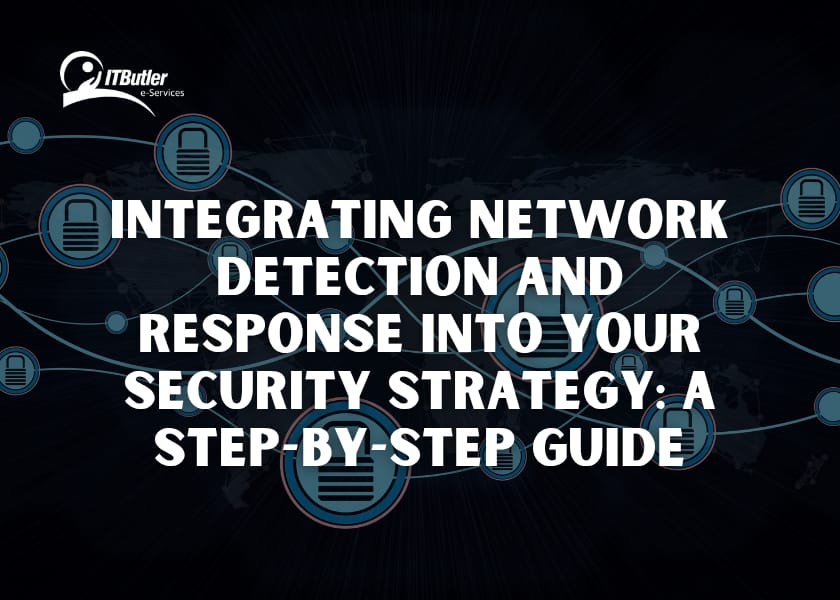These days hackers and crackers are much smarter in their approaches than before. As conventional approaches to security fail to meet the challenge, the companies remain exposed to threats that can easily overcome simple firewalls and viruses. Therefore, this is where NDR’s security strategy comes in, a solution for taking enhanced detection, constant monitoring, and automated actions for your network.
However, where should NDR solutions fit into your current security plan and framework? What procedures should be followed to effect these changes smoothly while gaining the most benefit?
In this blog, you will find the answer to these questions and learn more about a comprehensive and practical approach to NDR solutions implementation. Moreover, upon the end, the reader will have direction on how to enhance the detection and prevent the adversaries from moving around the network.
Key Features of NDR Security Strategy
Real-Time Monitoring: However, it analyzes network traffic in real-time so that it can identify any forms of unusual activity as it progresses.
Behavioral Analysis: It finds trends and outliers in a traffic flow and guarantees to identify even the slightest danger.
Automated Responses: Expels contaminated computers or prevents unauthorized computers from connecting to a network. Thus, reducing the problem’s spread.
AI and Machine Learning: However, it can learn and adjust to new threats to maintain a high level of accuracy.
Why Should You Integrate NDR Security Strategy?
1. Advanced Threat Detection
Modern hackers are stealthy and subtle and accomplish things like data theft, or even highly advanced malware, slipped by your traditional Endpoint Protection techniques. So what NDR does exceptionally well is identifying such threats and making sure they go unnoticed.
2. Complete Network Visibility
However, through NDR one can monitor east-west traffic (inter-device communication) and north-south traffic (inter-network communication). This visibility is very important in case one is to discover potential threats that are not well observed.
3. Faster Response Times
Cybersecurity cannot afford to be late on its side since everything is often closely knit. Therefore, NDR solutions are self-driven and cause very little interference with your team’s work, which is their advantage.
4. Proactive Security Measures
It does not only defend NDR from malicious attacks but can predict them and neutralize them before they occur.
Integration of NDR Modern Security Strategy, Step-By-Step Guide
Step 1: Assess Your Organisation’s Current Security Stands
However, when preparing to integrate NDR take a brief inventory of your current situation in terms of cybersecurity.
1. Identify Weaknesses
- Do you have zones in your network that are essentially invisible to your business?
- Currently, how do you look at east-west traffic?
- The response time you can provide is effective enough to counteract new emerging threats?
2. Define Clear Objectives
Who and what do you want to target with NDR? However, the common goals include:
- Reducing false positives.
- Detecting advanced threats.
- Maximizing the percentage of cases that fit the organization’s definition of an incident that is responded to appropriately.
3. Check for Compliance Standards
Make sure that the type of NDR you have is compliant with certain rules and regulations such as GDPR or HIPAA.
Step 2: Do Your Homework and Select the Proper NDR Solution
Selecting the proper NDR solution is, therefore, very important to ensure proper integration.
1. Scalability Matters
However, your solution should be able to scale with your firm. For example, if you are increasing the number of cloud services, there should be an option for the NDR to track hybrids.
2. Special concentrate on AI and Machine Learning
Choose products that contain a machine learning component when it comes to network protection. Because these systems are dynamic in terms of threats and do not issue false positives in the long run.
3. Vendor Reputation
Employ the services of a vendor who has been VERY particular with the issue of security in his previous contracts. Moreover, focus on customer service, stable updates, and positive feedback from other similar businesses.
Step 3: Deploy the NDR Solution
1. Pilot Testing
You should begin by adopting the NDR system on a less significant segment in your network. A segment that you place less importance on. As it enables you to exercise them and see how it works but you don’t have to interrupt the usual business operations.
2. Configure to Your Needs
- Alerts can be tailored toward the risk appetite of your specific organization.
- Set specific levels at which the software should be programmed to look for odd activities such as bulk transfers or access attempts.
3. Integrate with Existing Tools
The ability of the NDR solution to integrate with your current security infrastructure including your SIEM, firewalls, and other security tools is very important to have.
Step 4: Fine-Tune and Monitor
1. Analyze Alerts
The third recommendation is to check the alert produced by the NDR system for patterns. However, make use of this data to refine some configurations and put forward the minimum number of false positive incidents.
2. Regular Updates
It is also important for the NDR tool to change as your network expands. Therefore, create new and change many of its rules, policies, and baselines annually.
3. Train Your Security Team
However, teach your team how to analyze alerts and get the most out of NDR solutions for your setup.
Step 5: Enhance Network Segmentation
Classification of your network is a critical measure to increasing NDR efficiency.
1. Divide Your Network
On general systems, do not operate systems that contain or process sensitive information. Because this restricts the dissemination of threats when a threat has penetrated the system.
2. Monitor Lateral Movement
NDR stands out in identifying a condition known as lateral movement where attackers navigate within the network after penetrating the outer layer of the system.
Step 6: Email Automate Response and Incident Management
1. Automate Key Actions
NDR systems can even be designed to quarantine infected machines, blacklist offending IP addresses,ac or even close offending accounts.
2. Conduct Incident Simulations
Regular simulations ensure your team and the NDR system are prepared for real-world attacks.
Step 7: Optimize Your NDR Strategy
Consider information from alerts and reports of specific incidents to make changes to your NDR parameters.
Advantages of Integrating NDR Security Strategy
1. Comprehensive Threat Visibility: With NDR, you get visibility to all traffic. So, this allows you to discover weaknesses that a hacker will seek to exploit.
2. Faster Responses: However, automated actions therefore are a way of cutting down the time used in eliminating the threats.
3. Regulatory Compliance: NDR tools produce comprehensive reports, hence the ease of running compliance audits.
4. Future-Proof Security: Like any innovative software, NDR grows with the innovation that is presented by the new threats. Thus making it future-proof.
Conclusion
It is impossible to overestimate the benefits of including Network Detection and Response (NDR) in your security concept. With the help of this guide, you will be able to increase your protection level, enhance the rating of detection, and to respond to threats much quicker.
Please don’t wait until it is too late. It is high time that you begin constructing a reliable NDR security strategy to protect your organization’s future.





